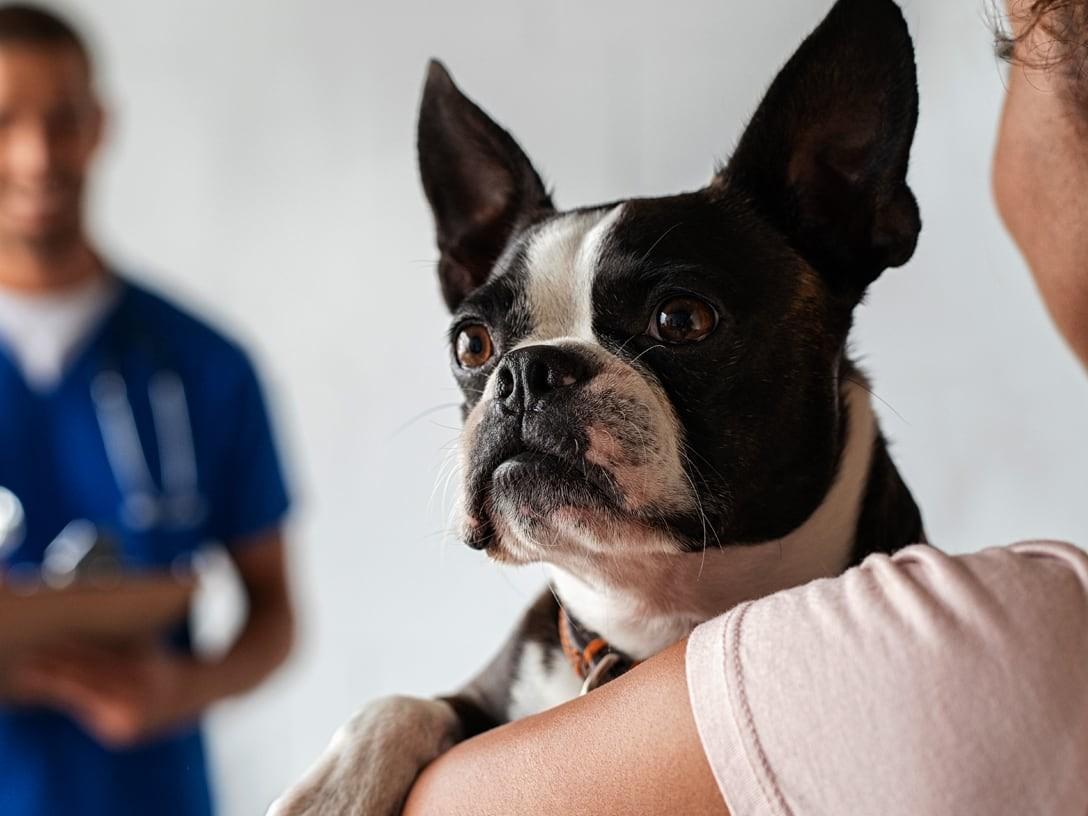Dog poop isn't an enjoyable topic, but getting to know what your dog's poop looks and smells like normally will help you spot when there's something wrong. Colitis is just one health condition that affects a dog's guts, but it’s quite easy to recognize when you know what you’re looking for. In this article, we’ll help you understand colitis and how it’s treated, and spot the signs if your dog is affected.
Breeds commonly affected:
Boxers (ulcerative colitis)
Any breed prone to scavenging
What is colitis in dogs?
Colitis is a term used for inflammation of the colon (large bowel). This is the last portion of the gut before the rectum, where most of the water is absorbed from the stools before they are passed. The colon is lined with cells that produce mucus, and there are lots of tiny blood vessels in the walls of the colon that help with fluid absorption.
Symptoms of colitis in dogs
The symptoms of colitis in dogs include:
Pale or yellow stools
Mucus in the stools
Loose stools – often like a cow pat or jelly-like
Blood in the stools (fresh, red, usually just a few spots or streaks)
Frequent defecation (which may mean accidents in the house)
Restlessness
Vomiting (occasionally)
Weight loss (occasionally)
However, if your dog has colitis, they may only show one or two of these signs, depending on the severity and time course.
Causes of colitis in dogs
Colitis has many causes including stress, inflammatory bowel disease, and bacterial infections. It can also be caused by parasites, such as Giardia and whipworm, or triggered by food sensitivities or dietary indiscretion. However, colitis can also be idiopathic, meaning the cause isn’t always clear. Certain dogs can be prone to specific conditions, for example, Boxers are predisposed to ulcerative colitis.
Treating colitis in dogs
Mild colitis in dogs, especially cases triggered by food sensitivity or eating something particularly fatty or rich, is often self-limiting, requiring little treatment other than a bland and consistent diet for a few days. However, colitis can get worse over time, because the straining causes more inflammation of the colon and rectum, which in turn leads to more straining. Therefore, probiotics and fiber can be useful to restore the normal gut rhythm.
If there is a known underlying cause, this should also be addressed, meaning your dog with colitis may need parasite treatment, antibiotics, or a hypoallergenic diet. Depending on the diagnosis and severity, some dogs are treated with anti-inflammatory, anti-allergy, or immunosuppressant medication. If stress is thought to be a factor, using calming diffusers or anti-anxiety medications may help to keep colitis flare-ups to a minimum.
Sometimes, dogs with colitis require ongoing treatment and management to keep their symptoms under control and prevent a relapse. However, many dogs are only given treatment during colitis episodes.
How much does it cost to treat colitis in dogs?
Although many cases improve quickly, colitis in dogs can be a frustrating and persistent problem, and costs can quickly add up. According to data from Spot Pet Insurance, the average nationwide cost to treat colitis in dogs in the US is $201.35 per episode, and here’s what you can expect your dog’s treatment to cost in the following states:
California - $267.80
New York - $379.00
Texas - $147.63
Florida - $315.68
How to prevent colitis in dogs
Unfortunately, colitis in dogs cannot always be prevented. If your dog is prone to colitis you may face repeated flare-ups throughout their life. However, to reduce your dog's chances of developing colitis symptoms, it's a good idea to keep them up to date with parasite control treatments, avoid fatty or rich treats, and keep their diet as consistent as possible.
Spotting the signs that your dog is stressed early, and taking steps to try to reduce their anxiety before other problems develop, may also help to avoid colitis developing. If they’re prone to scavenging on walks, make sure you keep a close eye on them so that they don’t eat anything that could upset their guts.
Summary
Colitis can be a scary thing to see. After all, it’s normal to think the worst if you see blood in your dog’s stools. However, although colitis can be tricky to manage and can recur, it’s not usually serious or life-threatening. Thankfully, with your vet's help, you should be able to get the symptoms under control.
About the Author
The blog post above was authored by Dr. Hannah Godfrey, a dedicated veterinarian who wants to make pet care less confusing. After years in practice, she now uses her expertise to write articles that helpful pet owners understand how to best care for their pets. Read more articles written by Dr. Godfrey here.

Hannah graduated from the Royal Veterinary College in 2011 and began work straight away at a busy mixed practice. Initially, she treated all species, but focused on small animals from 2014. She has a passion for soft tissue surgery, ultrasound, and canine and feline dentistry, having completed additional training in these areas.
In 2018, Hannah began working at a smaller, independent practice close to home, in order to devote more time to her other loves – writing comedy fiction and spending time with her young family. She now spreads herself across clinical and non-clinical veterinary roles, including working as a locum vet, being Community Lead for a team of Human Factors trainers, and using her writing skills to help educate and inform pet owners.












